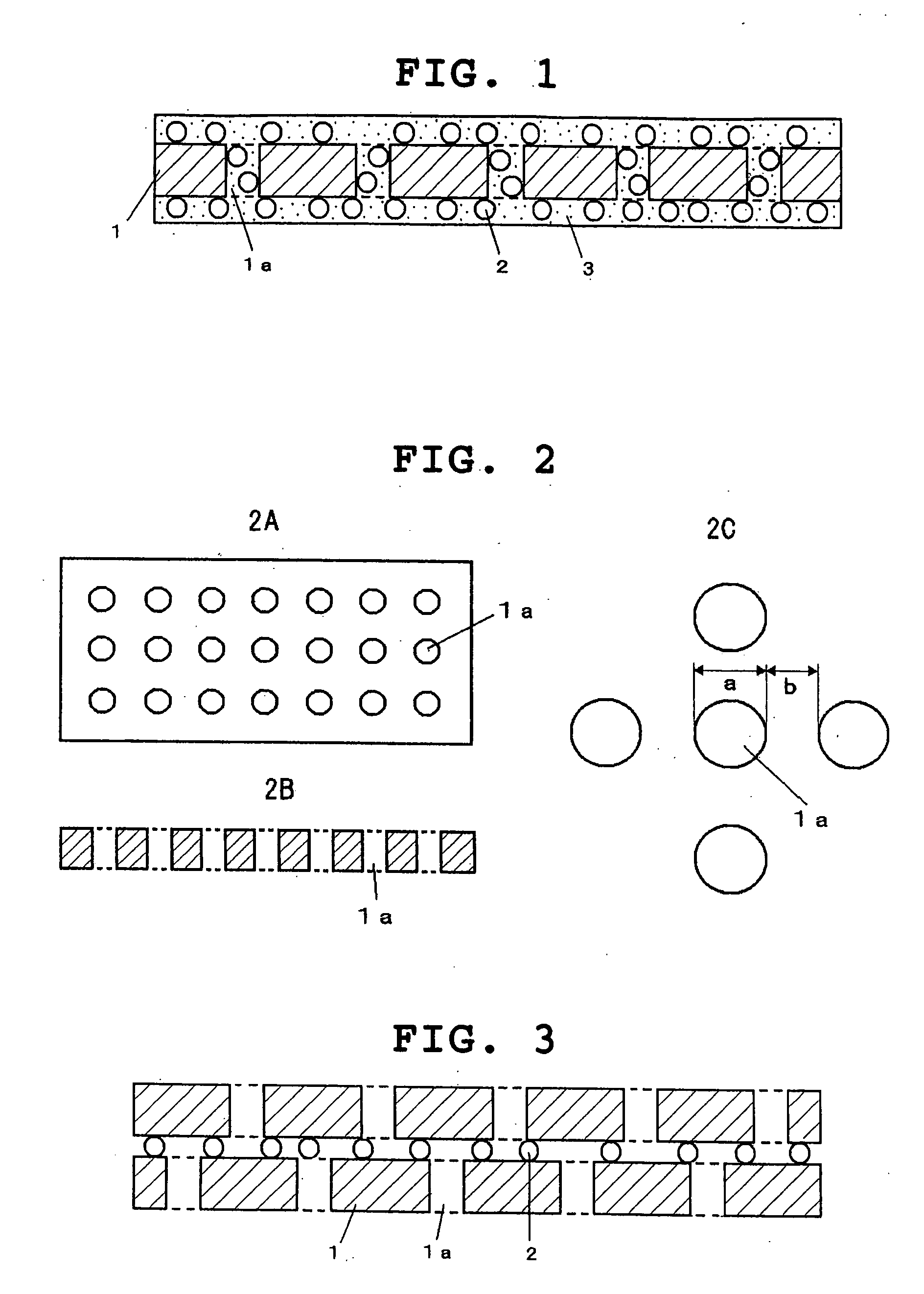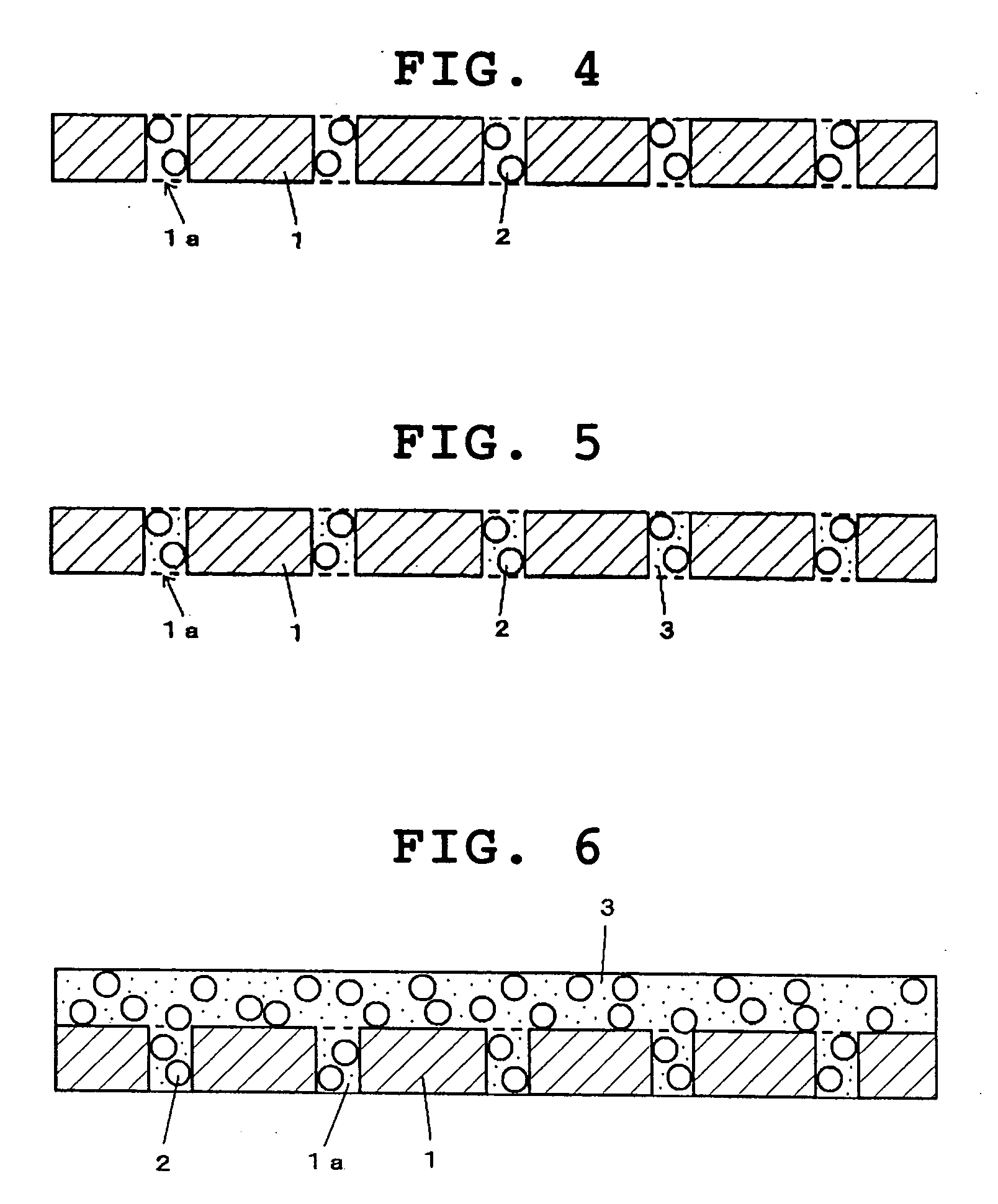Electronic component separator and method for producing the same
a technology of electronic components and separators, which is applied in the direction of cell components, cell component details, electrochemical generators, etc., can solve the problems of affecting the ability of the separator, reducing operability and yield in the production process, and affecting the mechanical strength. , to achieve the effect of excellent short-circuiting resistance, excellent workability and high reliability
- Summary
- Abstract
- Description
- Claims
- Application Information
AI Technical Summary
Benefits of technology
Problems solved by technology
Method used
Image
Examples
example 1
[0071] Vinylidene fluoride homopolymer with an average molecular weight of 300,000 was dissolved in 1-methyl-2-pyrrolidone, to which dibutyl phthalate was added to prepare a solution containing vinylidene fluoride homopolymer by 15 percent by weight. The water content of this solution as measured by the Karl Fischer method was 0.6%. Next, a non-woven fabric with a thickness of 10 μm, made of polyethylene terephthalate fibers made only of fibers with a melting point of 260° C. and on which 5 g / m2 of PTFE grains with a primary average grain size of 0.25 μm and melting point of 320° C. were retained, was placed on the surface of a resin film made of polyethylene terephthalate, and then the aforementioned solution was applied on the non-woven fabric using the casting method. Next, the solvents in the solution that has penetrated into the non-woven fabric were evaporated by way of heating to produce a separator with a thickness of 22 μm, having a porous resin structure of vinylidene fluo...
example 2
[0073] An electronic component separator was produced in the same manner as in Example 1, except that a non-woven fabric with a thickness of 15 μm, made only of vinylon fibers having a melting point of 205° C., was used as the porous base. When the obtained electronic component separator was observed by an electron microscope, no defects such as pinholes were found. The porous resin structure had a series of many pores linked together to connect one side of the porous base to the other side, and the diameters of individual pores were smaller than the thickness of the porous base. The distribution of pore diameters was consistent in the thickness direction of the separator, confirming a uniformity of the porous structure in the thickness direction. The pore diameter of the separator as measured by the bubble point method was 1.0 μm.
example 3
[0074] An electronic component separator was produced in the same manner as in Example 1, except that a microporous resin film with a thickness of 15 μm, made of polyethylene terephthalate with a melting point of 200° C. and having only through pores that are formed in the vertical direction in a manner virtually free from any shielding structure and connecting one side of the resin film to the other side, was used as the porous base. When the obtained electronic component separator was observed by an electron microscope, no defects such as pinholes were found. The porous resin structure had a series of many pores linked together to connect one side of the porous base to the other side, and the diameters of individual pores were smaller than the thickness of the microporous resin film. The distribution of pore diameters was consistent in the thickness direction of the separator, confirming a uniformity of the porous structure in the thickness direction. The pore diameter of the sepa...
PUM
| Property | Measurement | Unit |
|---|---|---|
| melting point | aaaaa | aaaaa |
| melting point | aaaaa | aaaaa |
| diameter | aaaaa | aaaaa |
Abstract
Description
Claims
Application Information
 Login to View More
Login to View More - R&D
- Intellectual Property
- Life Sciences
- Materials
- Tech Scout
- Unparalleled Data Quality
- Higher Quality Content
- 60% Fewer Hallucinations
Browse by: Latest US Patents, China's latest patents, Technical Efficacy Thesaurus, Application Domain, Technology Topic, Popular Technical Reports.
© 2025 PatSnap. All rights reserved.Legal|Privacy policy|Modern Slavery Act Transparency Statement|Sitemap|About US| Contact US: help@patsnap.com



